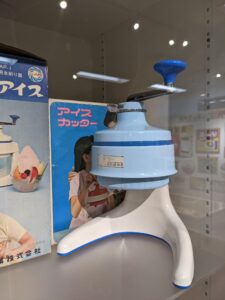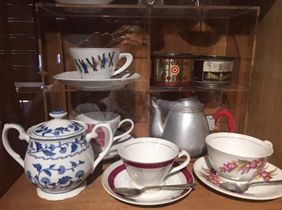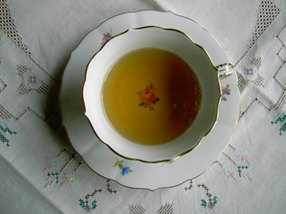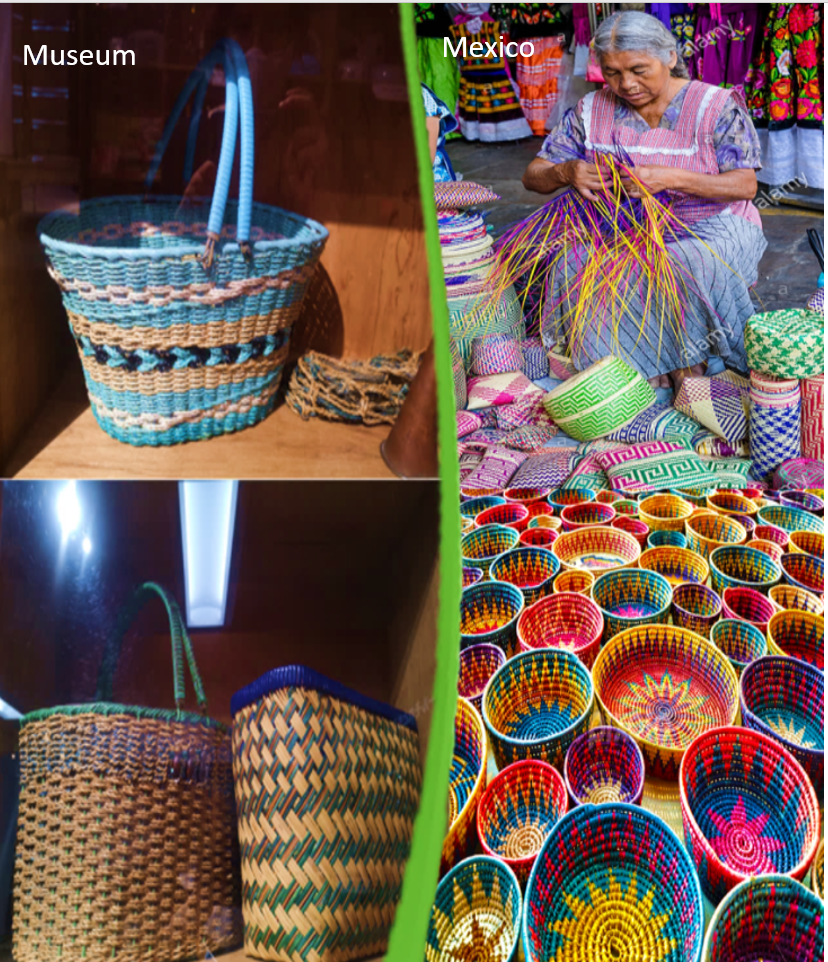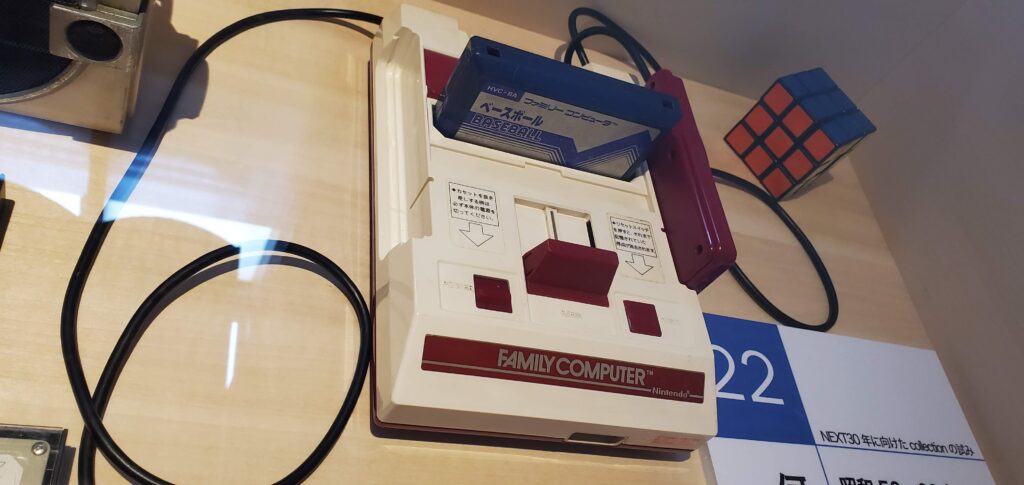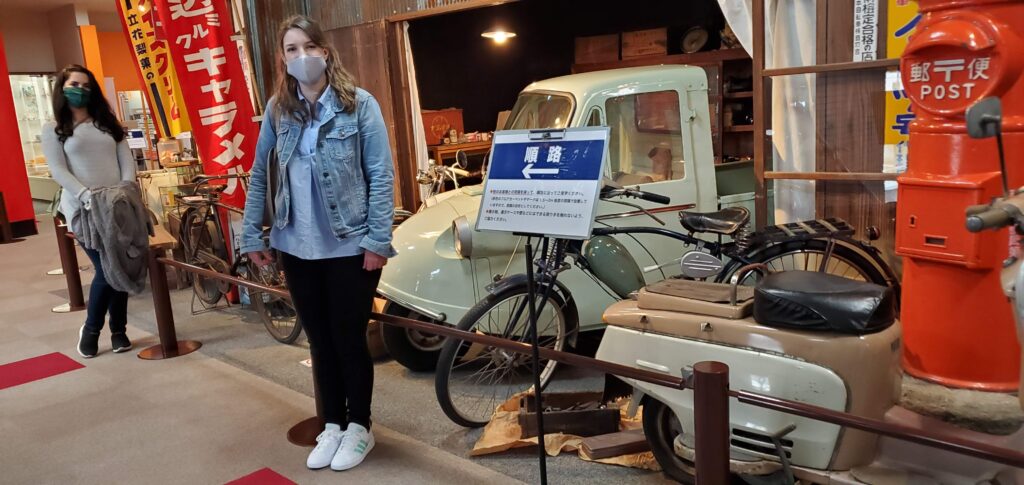The automobile exhibition space on the basement floor will be temporarily closed from 2 December, 2024 to 31 March, 2025 due to lift renovations.
During the renovation work, an alternative lift will be operated to the exhibition rooms on the third floor, so please follow the signs inside the museum when entering.
Seamus Mingay (South Africa)
This museum truly captures the essence of everyday life in Japan during the Showa era. The vibrant atmosphere, coupled with an impressive collection of household items and vintage automobiles, transports visitors back in time. The curated displays, including popular brand signage, offer a unique perspective on Japanese culture and history. Highly recommend experiencing this nostalgic journey for both locals and foreign visitors alike!
My favorite piece is a painted wooden and metal sign for Gekkeikan Sake. What I find particularly interesting is the depiction of a rugby player on the sign. I had thought rugby only recently gained popularity in Japan, but this sign shows that the sport has been popular for quite some time.
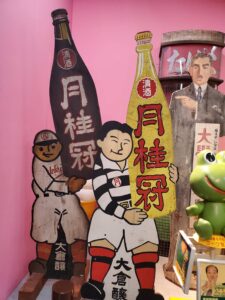
James Higa (Hawaii)
There is a tatami mat room with a round table in front of the television set. This is a typical vision of Japanese family life during the Showa period, as portrayed in television programs like Sazae-san and Chibi Maruko-chan. This was the fascinating scene that greeted me at the Showa Era Lifestyle Museum in Kitanagoya.
The plastic models of Godzilla, reminded me of two classic Godzilla movies, Mothra vs Godzilla and King Kong vs Godzilla. I watched these two movies in movie theaters back home in the United States, and dozens of times on TV in America and Japan.
Godzilla, created in 1954, is still running around in 2023, with the latest installment in the franchise Godzilla Minus One.
Television programs and movies still have Japanese people enjoying the Showa lifestyle.
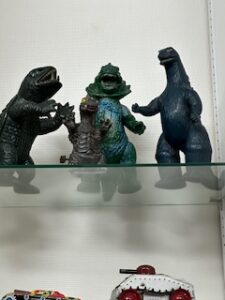
Jeremy Roesch(America)
I enjoyed my first trip to the Showa Era Lifestyle Museum. It was a really enlightening experience to see different pieces from history and how things have changed over time. The museum reminded me of my late grandfather as he was a collector of local artifacts and had built up quite a collection for a display and would go on to donate quite a few pieces to the local museum. I’m very thankful for having a chance to visit this museum as it has proven to be a very informative and engaging visit.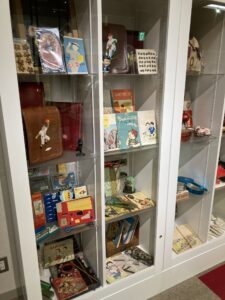
Calvin Marais (South Africa)
The hand-cranked washing machine was very interesting for me and how times have changed. From the days of scrubbing clothes by hand to the strange invention of hand-cranked washing machines, and now to the marvelous modernized machines with built-in tumble dryers! To me, the evolution of the washing machine is a tale of innovation and convenience and have revolutionized our daily routines, making the once laborious task of laundry much easier and more comfortable. I remember many stories from my grandmother on how her family, and even my father, had to hand-wash clothes every day when they were children. 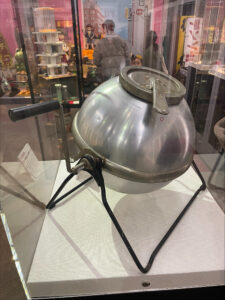
OUR-MUSEUM BROSURE
The Kitanagoya City Museum of History and Folklore (also known as the Showa Era Lifestyle Museum) was established in Aichi Prefecture with the purpose of preserving the daily life experiences of the Showa era. The museum’s main focus is on fostering nostalgic experiences and memories of the middle Showa era.
With a collection of over 100,000 daily life necessities from those times, the museum hosts over 40,000 visitors every year. One look at the exhibit prompts visitors to remark, “Wow, that really takes me back to that age!” Visitors are provided with nostalgic feelings and sentiments and encouraged to actively share their memories.
Memory of Ice Cream Maker Alexander Heise (the United States of America)
This was my first time visiting the Showa Era Lifestyle Museum. It was really wonderful to be able to see aspects of a generation from the perspective of those from another country and culture. Though a bit before my time, I have a lot of fond memories of spending time with my grandparents and seeing many things similar to those in the museum. One that I found particularly nostalgic was this ice cream maker. It’s similar to the one that my grandmother had. We would spend many afternoons in the summer making ice cream. I remember the first time we tried, it ended up very salty because we didn’t make it properly. But after that, we always knew how to make lovely homemade ice cream!
“Blümchenkaffee” (花ちゃんコーヒー) Sven Jensen (From Germany)
On the left the Japanese coffee cups and on the right the German coffee cup with the visible flower design through the weak coffee.
The moment I saw the beautifully ornate coffee cups, I stepped on my toes to see the bottom of the cups. To my surprise there was no adornment inside the cup, just outside. In Germany, the traditional coffee cups usually have a flower at the bottom of the cup. This is also how a humorous description of weak coffee has derived “Blümchenkaffee” (花ちゃんコーヒー). It is used when the coffee is so weak, that you can see the flower design through it.
Nowadays these cups are not that common anymore, or are used for more special occasions. Seeing these kinds of cups reminds me of being at my grandparents house over coffee and cake with the whole family.
For innovation I clearly suggest to include nostalgia to trigger emotions. People love to talk about nostalgic moments and have many stories about this to share. In an international context, this is also a wonderful opportunity to compare different cultures and see the similarities.
Perla Rodríguez Camarillo (From Mexico)
My memory about the Mexican woven baskets
When I saw these woven baskets, it reminded me of the Mexican artisans that make these baskets in the markets in Mexico. I used to see how they made it when my mother and I visit the markets during weekends. Saw this artesian is still pretty common in my country, now I wonder if I can see Japanese artisans making these beautiful woven baskets.
My memory about the “ Talavera” Mexican pottery
When I was visiting the museum I saw these beautiful cups and reminds me of Mexican pottery called “Talavera”, which can be seen not only in cups but also in floor decorations or pots for plants. I was surprised to see that they used these cups in their daily routine. In my house, the pottery is used only on special occasions like Christmas or New Year dinner. Actually, I remember that one of my favorite moments of these holidays was to finally my family and I could share some tea using the Talavera cups!
My memory of the Family Computer Samantha Young (South Africa)
Seeing the Family Computer console in the display case instantly reminded me of weekends away at my grandparents’ beach house with my family. After spending most of the day in the sun and surf, my sister and I would go inside and spend time playing games against each other or arguing over who gets to play the single player games first. Often my parents would join in the fun and play with us. Quite often our Family Computer console would stop working, and the only way to make it start again was to blow into the game cartridge and hope for the best.

